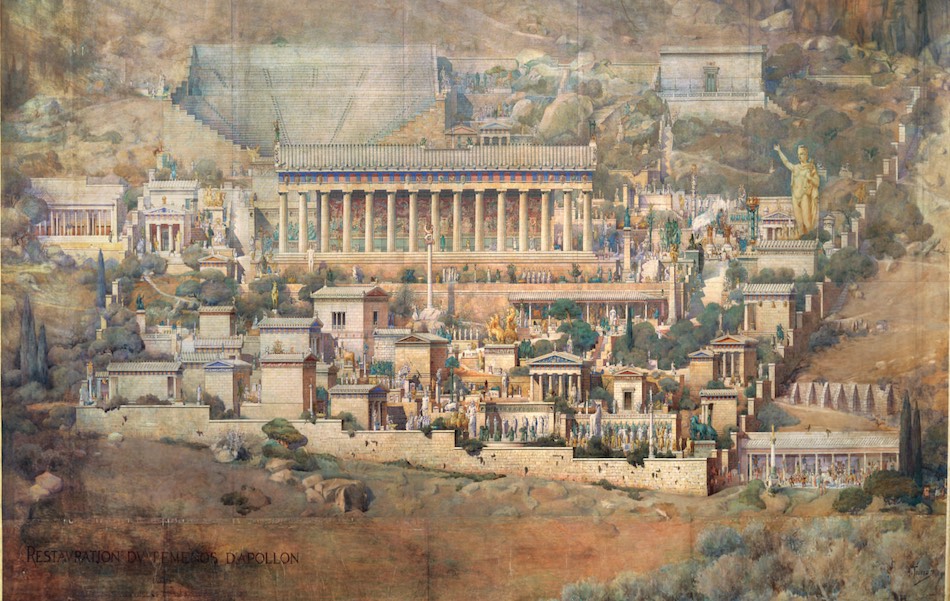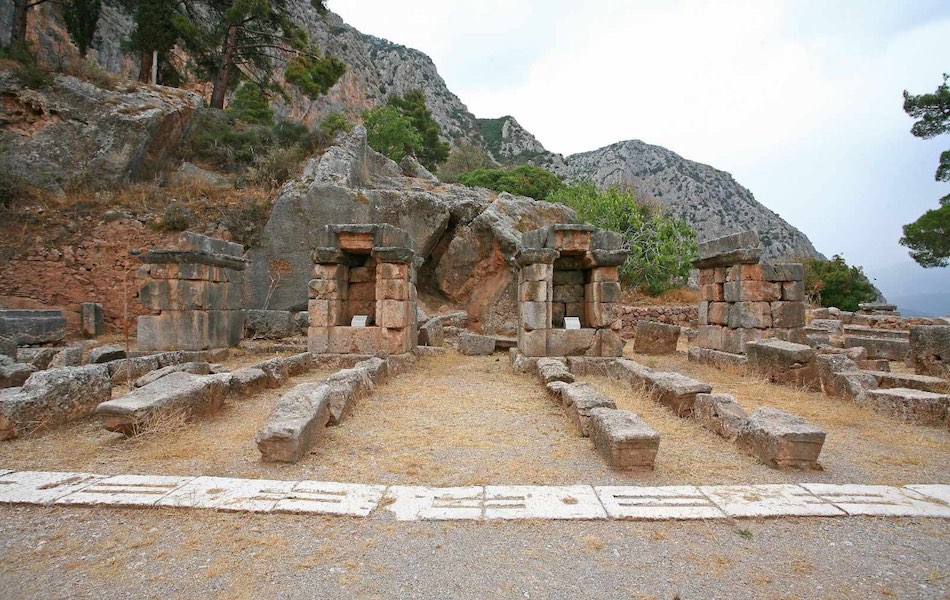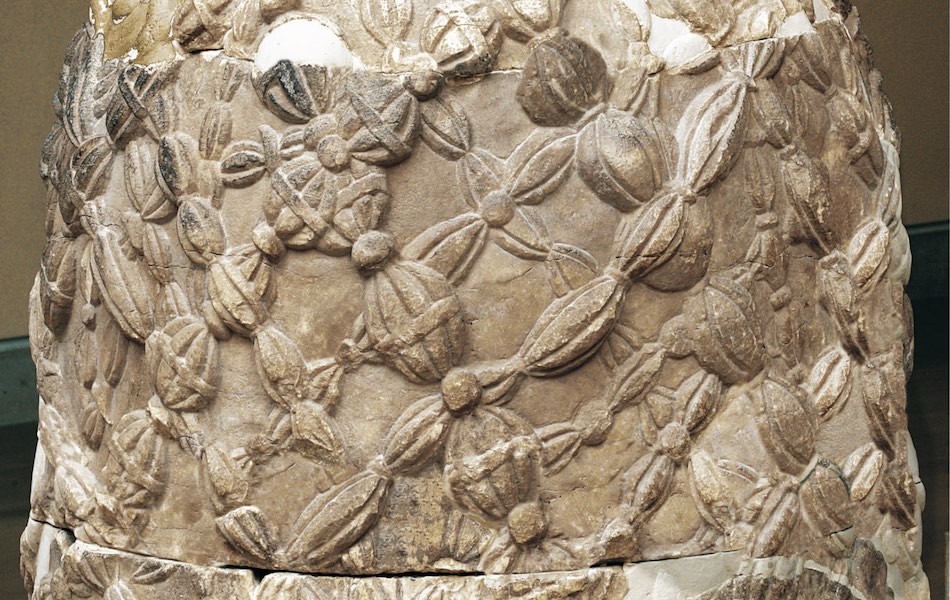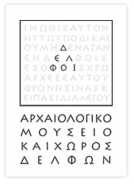This website uses cookies so that we can provide you with the best user experience possible. Cookie information is stored in your browser and performs functions such as recognising you when you return to our website and helping our team to understand which sections of the website you find most interesting and useful.

Votive relief of the “nekrodeipnon” (funerary banquet) type

Pedimental grave stele with rosette decoration from Amphissa
The names of the deceased engraved at different time periods after the stele’s original use in memory of Xenodokos are visible. The relief rosettes date back to the same phase. The names of the departed include, among others, the women Damocleia, Dikaia, Euboula and Kallinika. It dates between the 3rd and the 1st c. BC.

Marble cult statue of Kore from ancient Kallipolis
The statue of Kore/Persephone, together with the statue of Demeter, of which only scant fragments are preserved, constituted a cult sculptural group that adorned their homonymous local sanctuary. The figure is garbed in thin chiton girded high around the torso, tied with cordons over the shoulders and back, and himation. In the surviving foot of the figure are shown the tips of the toes and the kothornos, a comfortable shoe, easy to wear, with very thick soles, worn in antiquity by both men and women. It dates between 310 and 290 BC.

Terracotta figurine of a kourotroph from Amphissa
The infant (wearing a cap on the head) is shown in the arms of the nurturer. This theme is associated with many goddesses, mainly Demeter who, as protector of fertility, was identified with the productivity of the land and the fecundity of women. In antiquity, one of the main occupations of women was that of a nurse. The figurine belongs to the 3rd c. BC.
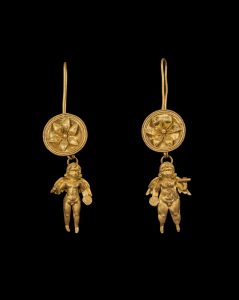
Pair of gold earrings from Amphissa
From discs with elaborate rosettes, dangle young winged Eros figures holding phiale and alabastron. Jewels of this type were particularly popular in the Hellenistic period as distinct symbols of Aphrodite. They were retrieved from a female burial and date back to the 2nd c. BC.

Gold hair coils (sphekoteres) from Amphissa
Hair coils (made either of bronze or gold) were used to hold and, simultaneously, adorn locks of hair with their intricate shapes and precious material. The depicted hair coils are quite original (for this type, bronze was usually preferred), reflect influences from workshops of Northern Greece, and bear witness to the contacts of the city already since early times. They are dated to the 8th c. BC.

Red-figure lekythos from Amphissa
It is decorated with a representation of a standing female figure with weaving tools. In antiquity, weaving was an activity undertaken by women, mainly at home. A substantial amount of information on the individual stages of the weaving process is gleaned from the various art forms. It dates from the 5th c. BC.
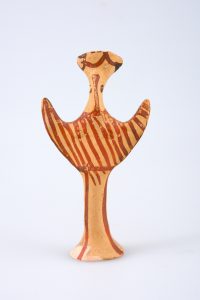
“Psi-type (Ψ)” terracotta figurine from Kirra
This handmade artefact has been classified as a “Psi-type” figurine, due to its resemblance to the respective letter of the Greek alphabet. The figure is shown wearing a headdress and long garment that covers the schematized arms and the chest, and is decorated with brown brushstrokes running parallel to each other. It depicts in an abstract manner a female figure in prayer or supplication. It dates between the 14th and the 12th c. BC.

Mycenaean lentoid sealstone
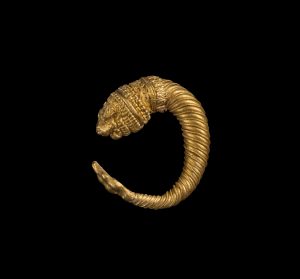
Earring in the form of a lion’s head
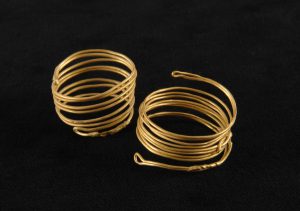
Gold hair coils (sphekoteres)
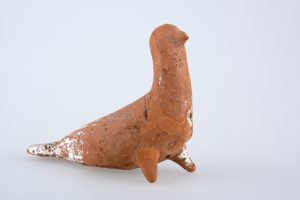
Rattle
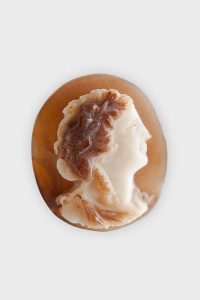
Cameo depicting the head of Dionysos
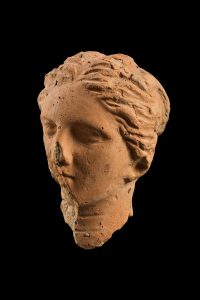
Head of a female figurine with hair bound in the knidian style
MUSEUM OF DELPHI



